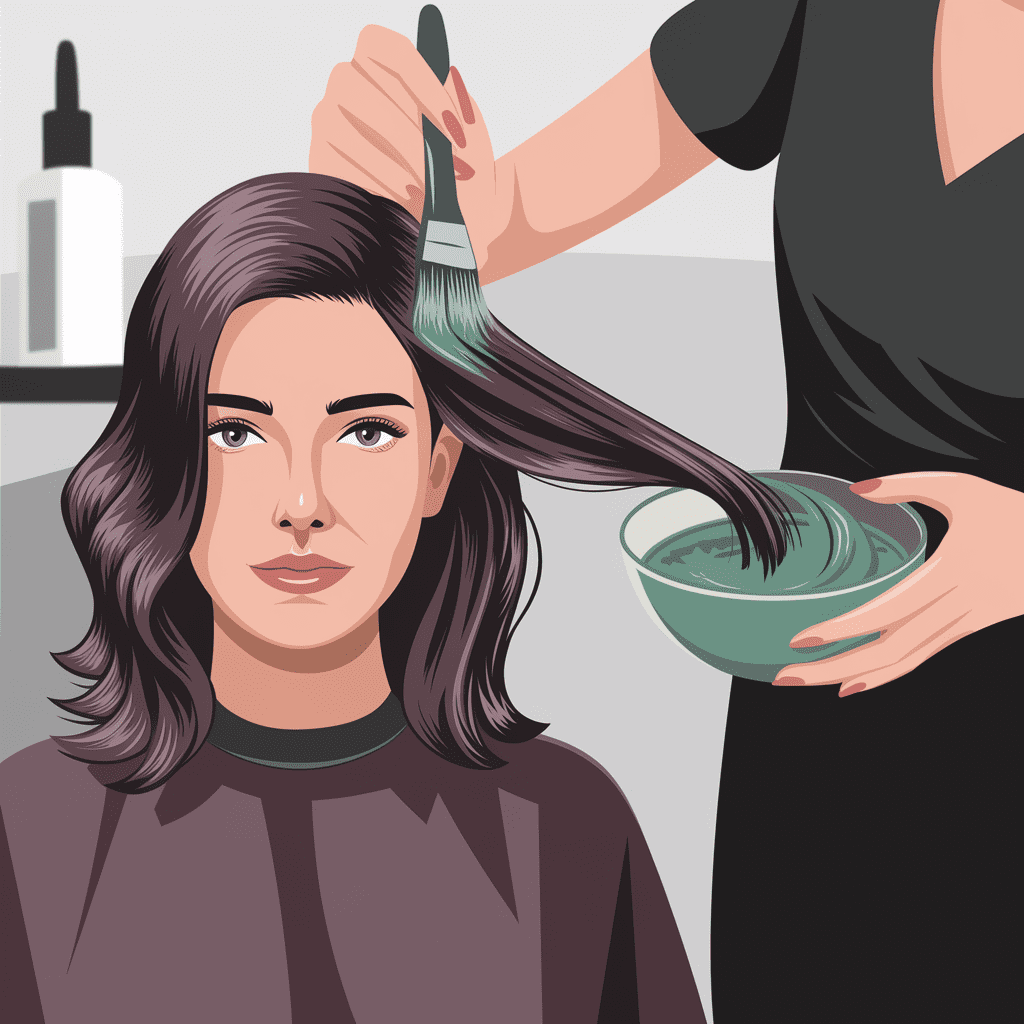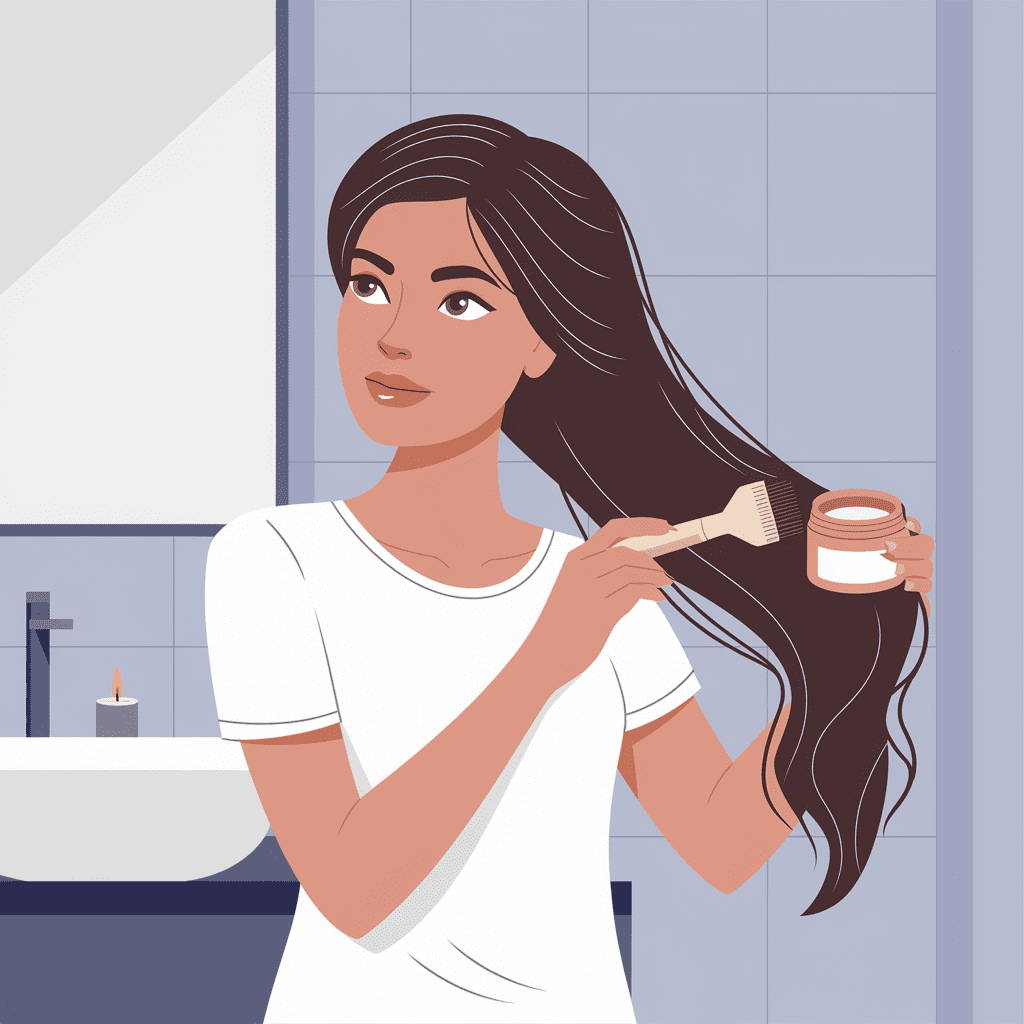Healthy, shiny hair is a desire for many. Hair masks can help achieve that.
A hair mask is a deep-conditioning treatment. It nourishes and repairs hair. With regular use, hair masks can improve texture and strength. Hair masks cater to various hair needs. Whether your hair is dry, damaged, or dull, there is a mask for you.
These treatments are rich in vitamins and natural oils. They penetrate deeply, providing intense hydration. This makes hair softer and more manageable. Hair masks can be a weekly treat for your hair, offering a spa-like experience at home. In this blog, we will explore the benefits of hair masks and why they are essential for healthy hair. Stay tuned to learn more about how to choose the right mask for your hair type and needs.
Introduction To Hair Masks
Hair masks are deep conditioning treatments that help nourish and strengthen your hair. They are usually thicker than regular conditioners and contain more potent ingredients. Applying a hair mask can provide your hair with moisture, shine, and protection from damage.
Hair masks can benefit all hair types, from dry and damaged to oily and fine. Using them regularly can make your hair healthier and more vibrant.
Benefits For Hair
- Moisturizes: Hair masks deeply hydrate hair strands, preventing dryness and frizz.
- Strengthens: They help repair damaged hair, making it stronger and less prone to breakage.
- Shine: Regular use can make your hair shinier and more vibrant.
- Protects: Hair masks provide a barrier against environmental damage and heat styling.
- Softens: They make your hair softer and easier to manage.
Common Ingredients
Hair masks contain a variety of ingredients that target different hair concerns. Here are some common ones:
| Ingredient | Benefit |
|---|---|
| Argan Oil | Hydrates and adds shine |
| Coconut Oil | Deeply nourishes and strengthens |
| Shea Butter | Moisturizes and softens hair |
| Keratin | Repairs and fortifies hair strands |
| Honey | Locks in moisture and adds shine |
Choosing the right hair mask depends on your specific hair needs. Whether you need hydration, strength, or shine, there is a hair mask that can help.

Choosing The Right Hair Mask
Choosing the right hair mask can be a game-changer for your hair care routine. The key lies in selecting a product that matches your hair type and addresses specific concerns. With so many options available, it’s important to know what to look for.
Hair Type Considerations
Different hair types need different treatments. For dry hair, opt for masks with hydrating ingredients like argan oil or shea butter. Oily hair benefits from lighter masks with balancing properties, such as tea tree oil or clay. Curly hair requires extra moisture and definition, so look for masks with natural oils and proteins. Fine hair needs a weightless formula to avoid weighing it down.
Specific Hair Concerns
Addressing specific hair concerns is essential for effective treatment. For damaged hair, seek masks with keratin or amino acids to repair and strengthen strands. If you have color-treated hair, choose products with color-protecting ingredients like UV filters and antioxidants. Frizzy hair benefits from masks containing smoothing agents like coconut oil or aloe vera. For a flaky scalp, look for masks with soothing ingredients such as peppermint or chamomile.
Diy Hair Mask Recipes
DIY hair masks can be a wonderful addition to your hair care routine. They use natural ingredients to nourish and revitalize your hair. You can easily make these masks at home. Below are some simple recipes tailored for different hair types.
For Dry Hair
Dry hair needs moisture and nourishment. Try this avocado and honey mask.
Mash one ripe avocado in a bowl. Add two tablespoons of honey. Mix until smooth. Apply the mask to your hair. Focus on the ends. Leave it for 20 minutes. Rinse with lukewarm water.
For Oily Hair
Oily hair requires balance. This yogurt and lemon mask works well.
Take half a cup of plain yogurt. Add one tablespoon of lemon juice. Mix well. Apply the mixture to your scalp and hair. Leave it for 15 minutes. Wash off with cool water.
For Damaged Hair
Damaged hair needs repair. This banana and olive oil mask can help.
Mash one ripe banana in a bowl. Add two tablespoons of olive oil. Blend until you get a smooth paste. Apply it to your hair. Make sure to cover all strands. Leave it for 30 minutes. Rinse with lukewarm water.

Application Techniques
Applying a hair mask correctly can enhance its effectiveness. Following the right steps ensures your hair gets the best treatment possible. This section will guide you through the essential techniques.
Preparation Steps
Start with clean hair. Wash your hair with a mild shampoo. Avoid using conditioner before applying the mask. Towel-dry your hair to remove excess water. Hair should be damp, not dripping wet.
Proper Application
Divide your hair into sections. This helps in even distribution of the mask. Use a wide-tooth comb to detangle your hair first. Apply the mask starting from the roots to the tips. Use your fingers or a brush to spread it evenly.
Massage your scalp gently with your fingertips. This boosts blood circulation and helps the mask penetrate better. Leave the mask on for the recommended time. This usually ranges from 10 to 30 minutes.
Rinse thoroughly with lukewarm water. Make sure no residue is left behind. You can follow up with a light conditioner if needed. Enjoy your smooth, nourished hair!
Frequency Of Use
Knowing how often to use a hair mask is crucial for hair health. Overuse can lead to greasy strands. Underuse can result in dry, brittle hair. Let’s explore the optimal frequency based on general guidelines and hair type specifics.
General Guidelines
Hair masks are a beneficial addition to your hair care routine. But, using them too frequently can be counterproductive. Most experts recommend using a hair mask once a week. This frequency allows the hair to absorb nutrients without becoming weighed down. Here are some general tips:
- Dry hair: Use a hydrating mask once a week.
- Oily hair: Use a clarifying mask once every two weeks.
- Normal hair: Use a balancing mask once a week.
Hair Type Specifics
Different hair types have unique needs. Understanding these can help you customize your hair mask routine.
| Hair Type | Recommended Frequency | Notes |
|---|---|---|
| Curly Hair | Once a week | Focus on moisturizing masks to combat frizz. |
| Straight Hair | Once every two weeks | Use lightweight masks to avoid weighing down hair. |
| Color-Treated Hair | Twice a week | Use masks designed for color protection. |
| Damaged Hair | Twice a week | Protein-rich masks can help repair damage. |
Follow these guidelines to keep your hair healthy and vibrant. Tailor your routine to your specific hair type for the best results.

Post-mask Care
Using a hair mask can leave your hair feeling soft and hydrated. But post-mask care is crucial to maintain those benefits. Proper rinsing and follow-up products help ensure your hair stays healthy and vibrant.
Rinsing Tips
Rinse your hair thoroughly after using a hair mask. Use lukewarm water to remove the mask. This helps retain moisture without stripping natural oils. Make sure no residue remains in your hair. Leftover product can weigh your hair down. It can also cause buildup and dullness over time.
Follow-up Products
After rinsing, use a gentle conditioner to lock in moisture. Choose a conditioner that suits your hair type. For extra nourishment, apply a leave-in conditioner. It provides added protection throughout the day. Avoid heavy styling products immediately after using a hair mask. Opt for lightweight serums or oils instead. They add shine without causing buildup.
Common Mistakes
Hair masks can do wonders for your hair. They provide deep nourishment, repair damage, and add shine. But, using them incorrectly can lead to problems. Let’s look at some common mistakes.
Overuse Issues
Using a hair mask too often can cause buildup. This can weigh your hair down, making it look greasy and flat. It’s best to use a hair mask once a week. For oily hair, once every two weeks is sufficient.
Overuse can also lead to protein overload. Too much protein can make your hair stiff and brittle. Balance is key. Alternate between a protein-rich mask and a moisturizing one.
Incorrect Application
Applying a hair mask incorrectly can reduce its effectiveness. Always start with clean, damp hair. This helps the mask penetrate better.
Focus on the mid-lengths and ends of your hair. The roots usually don’t need extra moisture. Applying a mask to the roots can make your hair look greasy.
Don’t rush the process. Leave the mask on for the recommended time. This allows the ingredients to work their magic.
| Step | Action |
|---|---|
| 1 | Start with clean, damp hair |
| 2 | Apply the mask to mid-lengths and ends |
| 3 | Leave on for the recommended time |
| 4 | Rinse thoroughly with cool water |
Finally, rinse thoroughly with cool water. This helps seal the cuticles, locking in moisture.
Expert Tips
Using a hair mask can greatly improve your hair’s health and appearance. Experts offer valuable tips to help you get the most out of your hair mask. These tips can make a significant difference in your hair care routine.
Professional Recommendations
Hair experts suggest choosing a mask that suits your hair type. Dry hair benefits from masks with moisturizing ingredients. Oily hair needs lighter formulations. Always read the product label. Follow the instructions for the best results.
Consistency is key. Use the hair mask regularly, but not too often. Once a week is ideal for most hair types. Apply the mask evenly from roots to ends. Ensure each strand gets covered. This ensures maximum benefits.
Avoiding Common Pitfalls
Overusing hair masks can lead to product buildup. This can weigh down your hair. Stick to the recommended usage frequency. Avoid leaving the mask on for too long. Follow the instructions carefully.
Rinse your hair thoroughly after using a mask. Residue can make hair look greasy. It can also cause scalp irritation. Use lukewarm water for rinsing. Hot water can strip natural oils.
Do not use a hair mask as a substitute for conditioner. Both products have different roles. Conditioner should be used after every wash. Hair masks are for deep conditioning treatments.
Frequently Asked Questions
What Is A Hair Mask?
A hair mask is a deep conditioning treatment. It nourishes and repairs hair. It provides hydration and strength.
How Often Should I Use A Hair Mask?
Use a hair mask once or twice a week. Frequency depends on hair type and condition.
Can Hair Masks Help With Hair Growth?
Yes, hair masks can promote hair growth. They strengthen hair and prevent breakage.
Are Hair Masks Suitable For All Hair Types?
Yes, hair masks are suitable for all hair types. Choose a mask that suits your specific hair needs.
Conclusion
Using a hair mask can transform your hair’s health. It adds moisture, reduces damage, and boosts shine. Regular use keeps your hair soft and strong. Choose the right mask for your hair type. Follow instructions for the best results. Treat your hair weekly for noticeable improvements.
Healthy hair starts with good care. A hair mask is an easy step to add to your routine. Enjoy smoother, shinier hair with little effort. Invest in your hair’s health today. Your hair will thank you!

